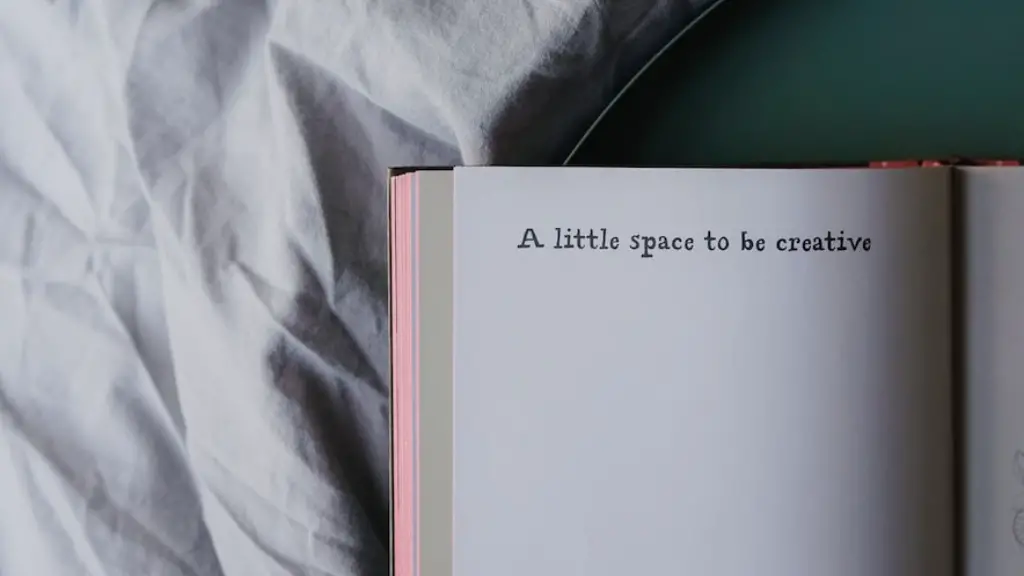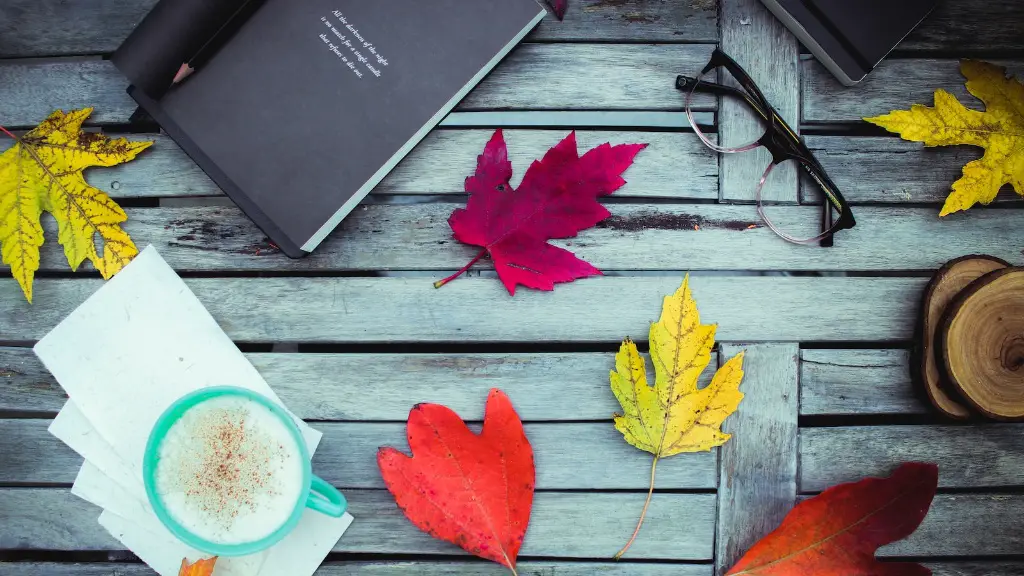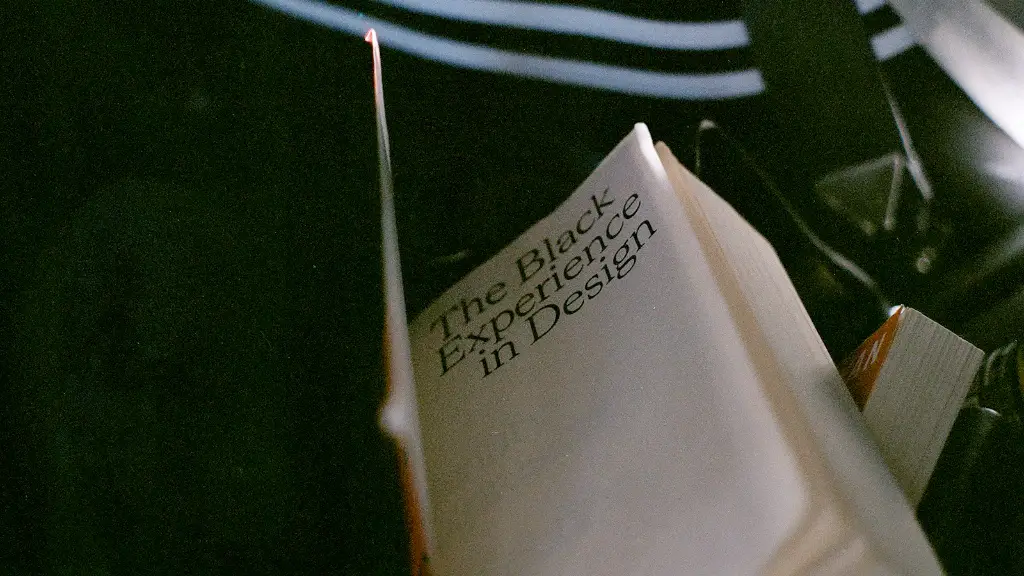Poetry is are cultural phenomenon, deeply embedded in the literary traditions of all societies. It has been used for hundreds of years to express emotions and ideas, as well as to capture pivotal moments in history, memorialize heroes, and tell stories. What exactly makes poetry unique among other forms of writing is often elusive to the average reader, with most not recognizing the subtle differences between a line of prose and a verse of poetry. By exploring what a “verse of poetry” actually is, one can gain a better understanding of how and why poetry differs from other written forms.
A verse of poetry is a line of words that is part of a poem. Any given poem may contain anywhere from one verse to many verses. A poem may also have multiple verses to a line. The lengths of a verse of poetry can vary greatly. A single-verse can be one line or several lines, such as a haunting epigram or a twist-ending limerick. It is also important to note that a verse of poetry is a distinct element of a poem and is not the same thing as a stanza, which is a group of verses.
A verse of poetry is composed of poetic devices such as meter, which is a specific pattern of beats or accents; rhythmic elements such as alliteration, assonance, and rhyme; and figures of speech that create powerful images. These devices are used to convey meaning or emotion, and the way it is composed can be as much as part of the poem as the meaning of the words. It is also significant that many pieces of poetry follow a fixed form and length, such as a sonnet or a villanelle, while others are seemingly looser in structure.
Many experts believe that poetry has an unparalleled ability to convey a personal experience or emotion. It is widely believed that the use of poetic devices such as alliteration, assonance, and rhyme can make the written word more powerful and evocative than simple prose. Such devices can bring about a specific feeling or mood, for instance, a sibilant “s” sound in several words can be suggestive of a soft, secret whisper, as well as allow for the unification of ideas or images.
In some poems, the meaning of a single line may only unfold as the next one is read, and the overall effect depends on how each verse relates to the preceding one. Some artists have even used this technique deliberately in order to create a poem that unfolds over time to a reader. This type of sequencing is believed to be one of the primary distinctions between poetry and prose, and is a major component of what makes a verse of poetry special.
Uniquely, the form of a verse of poetry is not limited to the written word: it can also be spoken. A spoken poem makes full use of word choice and verbal rhythm, which allow the artist to create an intense performance experience. Such performances are rich in gestures, sounds, intonation, and vocal rhythms, with each poem having its own specific rhythm, volume, and tone.
Rhetorical Devices and Figures of Speech
One of the primary tools used when composing a verse of poetry is the use of rhetorical devices and figures of speech. Such devices create a vivid image in the readers’ minds, often from few words. This makes the work of a poet unique, as they are able to create a engaging, emotionally laden composition from a few well-crafted lines or words.
Some of the most common rhetorical devices and figures of speech used by poets are alliteration, assonance, simile, metaphor, and hyperbole. Alliteration is the repetition of the same consonant sounds at the beginning of each word in a line or phrase, while assonance is similar in that it is the repetition of a vowel sound within the same line or phrase. Similes, metaphors, and hyperboles are all comparisons that a poet can employ to make a point, often figuratively and emotionally.
An experienced poet can craft a verse of poetry that invokes a powerful range of feelings and emotions, where the words go beyond their literal meaning and take on a variety of different meanings. This can create a powerful, evocative image in the minds of the readers, allowing them to be taken away to a unique and memorable experience.
Symbolism and Imagery
The use of symbols and imagery can also be found in a verse of poetry. These are abstract symbols or images that are used to represent ideas or feelings. For example, a poet may refer to a particular object or character to represent a certain emotion or state of being, giving the reader an understanding of the poem’s deeper themes. Moreover, symbols and images can help to create and maintain a particular mood or atmosphere throughout the poem, allowing the poet to convey their subject matter in more vivid and poetic way.
Symbols and imagery can take many forms depending on the poem and its intent. They can even be used as metaphors, a comparison of two seemingly unalike things that highlight a shared similarity. This can help create a vivid image in the readers’ minds, often with powerful emotional undertones. Furthermore, symbols and images can also be used to create an atmosphere or mood that is unique to the poem in question.
Symbolic images are used to express complex feelings, emotions, or ideas in a very direct, evocative way. They give the reader a particular insight into the poem’s theme, allowing them to relate it to their own lives and experiences.
The Power of Poetry
For centuries, poets have been using the written word to express ideas and feelings that can’t be expressed by other forms of written words. This is partly due to the fact that a verse of poetry can be loaded with so much meaning and emotion. Through powerful rhetoric and imagery, it has the ability to evoke powerful emotions in its readers.
It is also important to note that poetry is highly subjective. What one person takes away from a particular poem may be completely different from what someone else does. This is why it is so important for readers to take the time to understand what is being said and why it is being said. Doing so can lead to a greater appreciation of the work of the poet, as well as their unique approach to language in its written form.
Moreover, each poem is a representation of the emotion and experience of the poet: it is a record of the poet’s thoughts, feelings, and observations. By studying a single verse of poetry, one can gain an insight into the thought processes and psyche of the poet. Poetry, in short, is an intimate look into the writer’s soul.
The Form of a Verse
The form of a verse of poetry is what sets it apart from other forms of written expression. Every verse is unique in its structure and composition, often because it follows a specific pattern or style. This is often intentional, and is known as poetic form. Examples include sonnets and villanelles, among many others. Following a certain form can help structure a poem, as well as emphasize certain aspects of it.
The structure of the lines in a verse of poetry is also important. For instance, the length of the line can determine the pace of the poem, or the type of emotions that are being conveyed. A longer line can be suggestive of a slower, more thoughtful read, while a shorter line can create a faster, more intense feel. The use of punctuation, such as apostrophes, are also helpful at creating a certain kind of rhythm, as well as to indicate a pause or a change in direction.
Moreover, the arrangement of words also has a large impact on the poem’s effect. A poet may choose to use words that have multiple meanings, but in an intentional order: the order and arrangement of the words can evoke a multitude of different meanings and emotions. This technique is known as enjambment and involves the sense of an idea carrying on from one line to another, often creating a sense of anticipation.
Retaining a Poem’s Meaning Over Time
Another unique aspect of a verse of poetry is that it can remain unchanged over time. Unlike other forms of written expression, a poem does not need to be updated or altered in order to convey its meaning or message. It can remain intact for hundreds, even thousands of years and still be relevant and meaningful. This is because a poem relies on the power of its words rather than relying on a contemporary context or setting.
This allows readers to connect to a poem in their own individual way. It allows them to interpret the poem in different ways, based upon their own life experience, emotions, and concerns. This makes a verse of poetry one of the most powerful forms of written expression, as the poem speaks in fresh ways to people of different backgrounds and conceptions.
As a result, it has the power to personalize a complex message, to make it more meaningful and relevant to its readers. For example, a poem written centuries ago may be used as a reflection of today’s modern society, or it may be used to recognize an emotion or idea that still holds true in today’s world.
A Bridges Between the Past and the Present
Poetry can be an especially powerful form of literature for connecting the past and the present. This is partly because a poem is immutable, as its words will not change over time and as a result, its meaning and its message can remain unchanged. It is timeless in its power to evoke feelings, emotions, and thoughts.
Moreover, the language used in a poem can also be an important factor in creating the bridge between the past and the present. Poets often use old-fashioned forms of language to create a sense of familiarity, while still speaking to a contemporary audience. Thus, a poem can be read by both an audience in the past and an audience in the present and still have the same impact. With the right words and ideas, a poem has the power to transport both its readers and its audience to a new and meaningful place.
Conclusion: What Makes Poetry Unique
A verse of poetry is an intimately crafted art form that uses the power of words, symbols, and imagery to create a unique experience for its readers and listeners. It is often composed of poetic devices that allow for powerful and evocative images to be created from few words. Symbols and images are also used to create unique moods, atmospheres, and metaphors, while the structure and length of a line can help to shape the emotions and the ideas being expressed.
Ultimately, what makes poetry unique among other forms of written expression is its power to evoke powerful emotions and ideas, as well as a bridge between the past and the present. The use of rhetoric, symbols and imagery, and poetic form helps to make poetry one of the most intimate and powerful art forms, and it is this uniqueness that draws readers to it.





